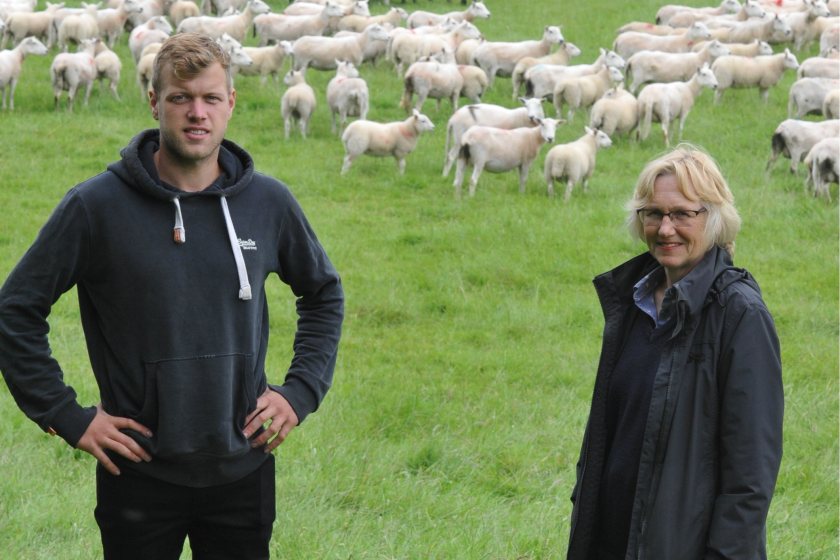
Monitoring ewes and managing their body condition score (BCS) has helped to reduce the rate of barren and aborted ewes by 6.4% in a Welsh flock, lifting profit margin by £3.34 a ewe to £9.65.
Farm owner Carine Kidd and share farmer Peredur Owen run a flock of mostly Easycare ewes at 215-hectare Glanmynys, a farm near Llandovery, alongside a beef-rearing system.
Through their work with Farming Connect, they have worked with industry experts, including independent sheep specialist Lesley Stubbings, to improve performance in 1,000 breeding ewes and 300 ewe lambs.
Management changes have included transitioning the flock to the Easycare breed, introducing outdoor lambing, reseeding, and growing more forage and winter crops; the move away from concentrates has reduced feed costs by £1.52/ewe.
During a recent open day at Glanmynys, Ms Stubbings advised farmers that body condition-scoring ewes was a simple and effective management tool for evaluating the body reserves of ewes pre-tupping, at scanning and at weaning.
This process has added priority this summer, because grazing is under pressure from extreme dry weather. By intervening now, dry matter (DM) covers can be matched to flock performance and farmers can make informed decisions, said Ms Stubbings.
“BCS is the one key performance indicator (KPI) that everyone can monitor; it has an over-riding effect on all the other performance factors," she said.
“If you want a ewe to perform, you must keep her at the right BCS throughout the year."
A target that every flock can achieve is to get the right level of condition at mating in at least 90% of the flock – for lowland breeds, that’s a condition score of 3-3.5 and in hill breeds, 2.5-3.
As a result of achieving target BCS in combination with improved nutrition, scanning percentage in the flock at Glanmynys has increased by 9%.
Ms Stubbings advised that farmers should physically feel ewes for condition, and not rely on a visual assessment. This can be done by handling them in the lumbar region, immediately behind the last rib.
The amount of eye muscle and degree of fat cover over the spinous and transverse processes should be assessed.
With grass in short supply this summer, there is likely to be a higher percentage of thinner ewes than normal, so early intervention is key, because it takes between six and eight weeks to lift fat cover by one condition score.
A single condition score is between 10-13% of bodyweight. In a 70kg ewe, that is 8-9kg; therefore, if a ewe is at BCS 2 and needs to be lifted to 3.5, she needs to put on 13kg.
That’s an additional 10 megajoules above maintenance requirements a day for 10 weeks - almost the same as a pre-lambing diet, said Ms Stubbings.
“This means a high level of feeding for lean ewes with concentrate supplementation, as well as hay or silage when grass is short."
To manage ewe condition during a summer of poor grass growth, leaner ewes from the Glanmynys flock have been sent away to graze land with higher covers, while a system of daily moves is in place for the fitter ewes.
The farm is future-proofing itself against drier summers by growing herbal leys; these had helped with lamb performance post-weaning, said Mr Owen.
A 15-acre crop of swedes has also been planted for grazing from mid-December to the end of February. Ewes will then be turned onto grass from 1 March, ahead of lambing from 1 April.
Veterinary and medicine costs have doubled in the last three years, because the business has spent money on metabolic profiling and blood sampling to evaluate trace element levels, and is vaccinating to prevent flock lameness.
However, thanks to improved efficiency and a shift towards a low-input forage-based system, profit margin per ewe has increased from £6.31 to £9.65.
